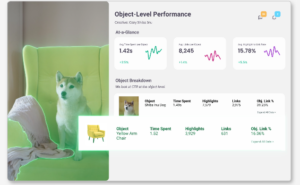By Matt Simmonds, Chief Product and Technology Officer of Phrasee
Remember the roughly 4,182,462 times that B2B marketers have heard that email was dead? Spam filters, blogs, social media – they all threatened to take email out at some point or another. But email didn’t just survive; it became the most important channel that modern B2B marketers can have at their disposal.
To be clear, marketers shouldn’t ignore other channels; on the contrary, each channel should be thought of as a critical part of the entire customer experience journey. Email just happens to be the most ownable part of that customer experience.
So what brought on this email renaissance? Well for starters, in the past year digital media consumption soared as users spent more time on their laptops and phones. According to Axios, time spent with digital increased by 15% last year.
This shift in mobile and device consumption must mean the time was ripe for enterprise brands to reach more customers through social media, right? After all, Internet users spend an average of 144 minutes on social media per day. The answer is actually, no. When a business is posting and advertising on social media, the truth is their target audience might not see it. And even if they do, will they care? And why spend money on something that might work when a B2B marketer could spend toward a marketing tactic that will work?
On the flip side of social, there’s email. It’s the channel where B2B marketers can actually have some control over their budget investment. Email marketing enables more direct engagement with customers and can provide B2B marketers more concrete ROI. If a marketer has the right email address, their email content will end up directly in the inbox of target customers the vast majority of the time – no intermediaries, just a straight shot from a marketer’s send button to a customer’s inbox. And according to Campaign Monitor’s annual benchmark report, which analysed over 100 million emails, engagement is going up. Open rates increased 13% YoY – meaning more users are interested enough to see what’s inside their inbox instead of scrolling past, like on social media.
A McKinsey & Co study recently stated that for companies, email marketing is 40 times more effective at reaching and acquiring customers than Twitter or Facebook. According to Shopify, the value of a single email contact grew from $16 in 2019 to $33 in 2020. So when B2B marketers are trying to decide whether to invest in email or social, the data makes the choice very clear.
The world’s biggest B2B brands have seen the writing on the wall, and while some are sending more, most are spending their time making sure that every email send is optimized to the nth degree. From the subject line, to the images used, to the copy and even the color of the CTA button – all of it is optimized. But what’s the right combination for each customer? With the help of AI, optimization becomes a lot simpler.
Take Curry’s* for example, a large electronics retailer in the UK. Curry’s is using AI technology to optimize the subject lines and copy within its email outreach campaigns. The electronics retailer used extremely advanced segmentation to effectively target its customers based on their purchase motivations. And AI also helped deliver optimized images to each recipient in real time, delivering specialized content that fit them the best. The result was a staggering 29:1 ROI on a single email campaign. Using AI to optimize every part of an email can lead to huge returns and more brands are asking what they can optimize next.
Another reason email is having a moment right now is ironically because it’s the same as it ever was. While Twitter and Facebook are tweaking their algorithms and experimenting with new features, email’s format and function remain consistent. With all of the upheaval B2B marketers have had to deal with this past year, it’s nice to not have to scramble every time a tech company decides to overhaul their platform.
With the first-party data a B2B marketer can access via leveraging email, they can know more about customers as they have direct access to them. Instead of having to track customers and their journey across the internet and piece together their wants and needs through data that’s incomplete; through email, customers can share feedback directly to businesses.
Email should be considered, like any other channel, as one of the many critical touch points within the customer journey. But it comes down to this: if B2B marketers are looking to drive better ROI while also providing an enhanced customer experience, then email remains the clear choice on where to invest your marketing dollars first.
*Curry’s is a Phrasee customer









